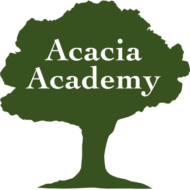“Students reap the benefits of fresh air and oxygen as they receive instruction in the outdoors. This practice has improved their ability to learn, minimize anxieties, and improve concentration. Academic levels and test scores have improved as a result of the opportunity to study in the Nature Center. Our ‘No Child Left Inside’ theme reinforces the benefits of education in the outdoors. Students are involved in outdoor studies which minimizes the possibility of Nature Deficit Disorder,” Kathryn Fouks, Clinical Director of The Achievement Centers, Inc. and Principal of Acacia Academy.
The Nature Center is divided up into three specific sections. The front contains vegetables and flower gardens, a three bin compost, raised beds, vertical gardens, rain barrels, plants to attract birds and butterflies, and a bird sanctuary. The middle third, an outdoor classroom, is used for quiet study. The Nature Center contains picnic tables that can be used to write notes or hold group discussions, as well as collapsible canvass chairs, outdoor cushions, and logs from fallen trees to sit upon. The back third acts as a physical education area equipped with balance beams (made from trees), a pull up bar, climbing rope, tree tire swing, an 1/8 mile running/therapeutic track, tether ball, and an outdoor badminton/volleyball court. The Nature Center is used for specific projects such as the development of a Zen Garden, bat house, environmental protections such as tepees, lean-toss, and an outdoor house built from materials found in the Nature Center after studies of the history of shelters and architecture.
The Nature Center is available to all students/staff and supports every aspect of the curriculum. For example, students participated in the design and construction of the gazebo, designed and constructed a three hole miniature golf course with replicas of Chicago buildings, and measured and constructed a platform in the middle of the miniature golf course that is used for yoga classes. Students can also be seen completing class assignments in the Nature Center including written language such as short sentences, paragraphs, essays, poetry and/or short stories. During a snowy day, students could be observed reading stories with a winter theme while seated in the gazebo. For science, students identify and label the changing indigenous wild flowers and plants, and work to eliminate invasive varieties. Acacia’s “Green Team” collects left over vegetables and fruit for the three compost bins, utilize water from the rain barrels for the gardens, and maintain the raised vegetable gardens and vertical gardens. Students observe the growth of the vegetables, do the harvesting, and prepare food and snacks for the school. Under the guidance of the Audobon Society and Acacia staff amongst the bird sanctuary, students learn to identify birds, which seeds to use for bird feeders, and chart the birds as they are sighted.
